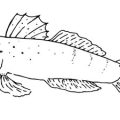1. Getting Started with Fishing Gear
When introducing kids to fishing, choosing the right gear is key for a fun and successful experience. Not all fishing equipment is created equal, especially when it comes to young anglers who need tools that are safe, easy to use, and sized just right for small hands. Let’s break down the basics of fishing gear suitable for kids, focusing on rods, reels, and lines.
Choosing the Right Rods
For children, lightweight and shorter rods are ideal. They’re easier to handle and help prevent fatigue during long hours by the water. Look for rods labeled as “youth” or “kids,” typically ranging from 3 to 5 feet in length. Materials like fiberglass offer durability without being too heavy.
Types of Reels
The best reel for beginners is the spincast reel. This type has a simple push-button design that makes casting easy and reduces the chances of tangles. Open-face spinning reels can also be considered as kids get older or more experienced, but starting with a spincast reel is generally recommended for young anglers.
Selecting the Right Fishing Line
A lighter fishing line (between 4-8 lb test) is perfect for kids. It’s strong enough to catch small fish commonly found in local ponds or lakes but thin enough to avoid unnecessary tangles. Monofilament line is a great option due to its stretch and forgiving nature.
Quick Reference Table: Kid-Friendly Fishing Gear
| Gear Type | Recommended Features | Why It Matters |
|---|---|---|
| Rod | 3–5 ft, lightweight fiberglass, “youth/kids” labeled | Easy handling and less fatigue |
| Reel | Spincast (push-button) | Simplifies casting and reduces tangles |
| Line | Monofilament, 4–8 lb test | Strong yet manageable for kids |
Always prioritize safety by selecting gear with smooth edges and secure fittings. Avoid sharp hooks when starting out—barbless hooks or even plastic practice hooks can be excellent for learning. With the right setup, your child’s first fishing trip will be both safe and memorable!
2. Choosing the Right Tackle
When it comes to getting kids started with fishing in the U.S., picking the right tackle is key for a fun and successful day on the water. Tackle includes all the gear you need to actually catch fish, like hooks, bobbers, sinkers, and more. Here’s a quick guide to help parents and young anglers understand the different types of tackle and how to choose what works best for popular local freshwater fishing spots such as lakes, ponds, and slow-moving rivers.
Common Types of Fishing Tackle
| Tackle Type | Description | Best For |
|---|---|---|
| Hooks | Sharp metal pieces used to catch fish when they bite the bait. | Panfish, bass, catfish—choose size based on fish species. |
| Bobbers (Floats) | Plastic or cork floats that keep your bait suspended in the water and signal when a fish bites. | Shallow waters, kids learning to fish—easy to see strikes. |
| Sinkers (Weights) | Small lead or steel weights that help your line sink and keep your bait at the right depth. | Lakes, rivers—where you need to get bait below the surface. |
| Swivels | Tiny metal connectors that prevent your line from twisting. | Spinning lures or live bait rigs—reduces tangles. |
| Spoons & Spinners | Metal lures that flash or spin in the water to attract fish. | Bass, trout—great for casting and retrieving action. |
Selecting Tackle for Local Conditions
Lakes & Ponds: For most local lakes and ponds in America, start with a small hook (size 6-10), a basic round bobber, and a few split shot sinkers. This setup is perfect for catching sunfish or bluegill near docks or shorelines.
Rivers: In slow-moving rivers, use slightly heavier sinkers to keep your bait from drifting too much. Swivels help if you’re using live worms or spinning lures.
Bass & Catfish: If targeting larger species like bass or catfish, step up to larger hooks and stronger line. You might want to use plastic worms or larger spinners for bass, or chicken liver on a sturdy hook for catfish.
Tip: Always check local regulations about tackle restrictions and recommended gear for certain species—it can vary by state!

3. Understanding Bait: Live vs. Artificial
Choosing the right bait is a big part of fishing success, especially for kids learning the basics in American lakes and ponds. There are two main categories of bait: live bait and artificial lures. Each type comes with its own set of advantages, disadvantages, and best-use scenarios.
Popular Types of Fishing Bait
| Bait Type | Examples | Pros | Cons |
|---|---|---|---|
| Live Bait | Worms, Minnows | Natural scent attracts fish; Easy for beginners; Effective for many species | Needs to be kept alive; Can be messy; Might not last long on the hook |
| Artificial Lures | Spinners, Soft plastics, Crankbaits | Reusable; No mess; Wide variety of colors and actions to match local prey | Takes practice to use effectively; Not as “natural” as live bait; Can be expensive |
Live Bait: Worms and Minnows
Worms: Nightcrawlers and red worms are classic options that attract a wide range of fish like bluegill, bass, and catfish. Simply thread a piece onto a small hook and cast near underwater structures or shady spots.
Minnows: These tiny fish work great for targeting larger predators such as bass and crappie. Hook them through the lips or back for lively movement that draws attention. Remember to keep them cool and in fresh water until you’re ready to use them.
Tips for Using Live Bait Effectively:
- Bring a small container with holes for worms or a bait bucket for minnows.
- If fishing in warm weather, store bait out of direct sunlight to keep it alive longer.
- Match your hook size to your bait—smaller hooks for worms, slightly larger for minnows.
Artificial Lures: Versatile and Fun to Use
Spinners: Great for beginners because they create flash and vibration in the water, attracting curious fish.
Soft Plastics: These come in all shapes and colors (like worms or grubs) and can be rigged in many ways. Try slow retrieves along the bottom for best results.
Crankbaits: Mimic small fish and move erratically when reeled in, making them irresistible to bass and other predators.
Tips for Using Artificial Lures Effectively:
- Select lure colors that match local prey (dark colors in murky water, bright in clear conditions).
- Experiment with different retrieval speeds—sometimes fish want fast-moving action, other times slow.
- If you don’t get bites after several casts, switch up your lure type or location.
The Bottom Line:
No matter which bait you choose, patience is key! Both live and artificial baits can help young anglers catch fish in America’s lakes and ponds—experimenting with both will help kids discover what works best in their favorite fishing spots.
4. Mastering Basic Casting Techniques
Before heading out to your favorite fishing spot, it’s important for kids to get comfortable with casting. Learning how to cast properly not only helps you catch more fish, but also keeps everyone safe and makes the experience more enjoyable. Below, we break down two simple casting methods that are perfect for beginners—plus some tips on practicing safely at home or in the park.
Overhead Cast
The overhead cast is one of the most common and easiest techniques for kids to learn. It’s great for getting your bait out into open water. Here’s a quick step-by-step guide:
| Step | Description |
|---|---|
| 1 | Hold the rod with both hands, keeping your index finger on the line above the reel. |
| 2 | Point the rod tip behind you, making sure there is nothing and no one nearby. |
| 3 | In a smooth motion, swing the rod forward while releasing the line with your finger as the rod points toward your target. |
Sidearm Cast
The sidearm cast is ideal when there are trees or obstacles overhead. It’s similar to skipping a stone across water, making it easy and fun for kids.
| Step | Description |
|---|---|
| 1 | Hold the rod parallel to the ground at your side. |
| 2 | Swing the rod sideways, using your wrist and arm in a smooth motion. |
| 3 | Release the line as your rod tip points toward where you want the bait to land. |
Practice Makes Perfect
You don’t need to be at a lake or river to practice casting! Use these tips for safe and effective practice sessions:
- Use a practice plug (a rubber weight) instead of a hook when casting in your yard or at the park.
- Create targets using hula hoops or buckets to help kids aim their casts.
- Always check that there is enough space behind and around you before casting—no people, pets, or breakables!
- Wear sunglasses and hats for extra protection from errant casts or flying objects.
Casting Safety Reminders
- Never cast if someone is standing close by or behind you.
- If youre fishing with friends, spread out so each angler has plenty of room.
- Take turns practicing to avoid tangled lines and accidents.
By mastering these basic techniques and safety tips, young anglers can build confidence and have lots of fun while learning how to fish responsibly!
5. Catching and Releasing Fish Safely
Learning how to catch and release fish safely is a crucial skill for young anglers, especially when fishing in American lakes, rivers, or coastal waters where conservation is a top priority. Practicing proper catch-and-release techniques helps protect local fish populations and ensures that everyone can enjoy fishing for years to come. Here’s a guide on how to handle and release fish responsibly:
Catch-and-Release Guidelines
| Step | Description |
|---|---|
| Use Barbless Hooks | Barbless hooks make it easier to unhook fish with minimal injury. |
| Wet Your Hands | Always wet your hands before handling fish to protect their delicate slime coating. |
| Support the Fish | Hold the fish gently under its belly and support its weight; avoid squeezing tightly. |
| Minimize Air Exposure | Try to keep the fish in the water as much as possible and limit air exposure to less than 30 seconds. |
| Remove Hook Carefully | If the hook is deep, use needle-nose pliers or a hook remover; if removal isn’t possible, cut the line close to the hook. |
| Revive Before Release | If needed, move the fish gently back and forth in the water to help it regain strength before swimming away. |
American Catch-and-Release Etiquette
- Respect local fishing regulations by knowing size limits, seasons, and protected species.
- Avoid disturbing wildlife habitats—stay on designated paths and do not litter near water bodies.
- If you see other anglers, give them space and keep noise levels down to respect their experience and the natural setting.
The Importance of Conservation
Caring for fish and their environment is about more than following rules—it’s about respecting America’s outdoor traditions. Teaching kids these principles helps foster lifelong stewardship of our waterways. By catching and releasing fish safely, families contribute to local conservation efforts and ensure that future generations can enjoy the thrill of fishing just like they do today.
6. Essential Fishing Safety Tips
When it comes to taking kids fishing, safety is the top priority for every family adventure. Whether you’re heading to a local pond or a public fishing pier, understanding and practicing essential safety rules ensures everyone has a fun and memorable experience. Here are some key safety considerations tailored for U.S. families enjoying the great outdoors.
Life Jacket Use
Anytime children are near water—especially on docks, boats, or riverbanks—they should wear properly fitted U.S. Coast Guard-approved life jackets. Even if your child is a strong swimmer, unpredictable conditions like slippery rocks or sudden currents can pose risks. Set an example by wearing a life jacket yourself when boating with your kids.
Sun Protection
Spending hours in the sun can lead to painful sunburns or even heat-related illnesses. Always apply broad-spectrum sunscreen (SPF 30 or higher), and don’t forget areas like ears, neck, and tops of feet. Encourage kids to wear hats with wide brims, polarized sunglasses to protect their eyes, and lightweight long-sleeve shirts for extra coverage.
Sun Protection Checklist
| Item | Recommended Action |
|---|---|
| Sunscreen | Apply every 2 hours and after swimming |
| Hat | Choose wide-brimmed styles for best coverage |
| Sunglasses | Select UV-blocking lenses for eye protection |
| Clothing | Wear light-colored, long-sleeved shirts & pants |
| Shade | Take breaks under trees or bring an umbrella |
Water Awareness & Supervision
No matter how calm the water appears, always supervise children closely—active supervision means keeping them within arm’s reach at all times. Teach kids to respect water boundaries and never allow them to fish alone or wander off unsupervised. Go over basic emergency procedures so everyone knows what to do if someone falls in.
Tips for Family Fishing at Public Spots
- Review posted rules and regulations at parks or piers before you start fishing.
- Keep tackle boxes closed and sharp hooks out of reach from small children.
- Carry a simple first-aid kit with bandages, antiseptic wipes, and insect repellent.
- Stay hydrated—pack plenty of cold water and healthy snacks.
- If fishing near wildlife areas, teach kids not to disturb animals or leave trash behind.
Quick Reference: Safety Essentials for Kids’ Fishing Trips
| Safety Item | Why It Matters |
|---|---|
| Life Jacket | Drowning prevention on boats and near deep water |
| Sunscreen & Hat | Avoid sunburn and heat exhaustion |
| Tackle Box Storage | Keeps hooks/gear away from little hands |
| Active Supervision | Immediate response in case of emergencies |
| First-Aid Kit | Treat minor cuts or stings quickly on-site |
By making safety a family habit, you’ll help ensure every fishing trip is safe, enjoyable, and packed with positive memories that will last a lifetime.

